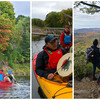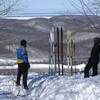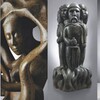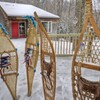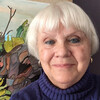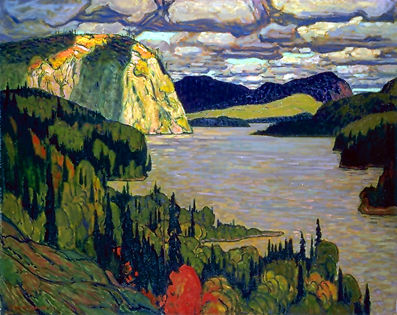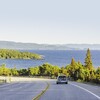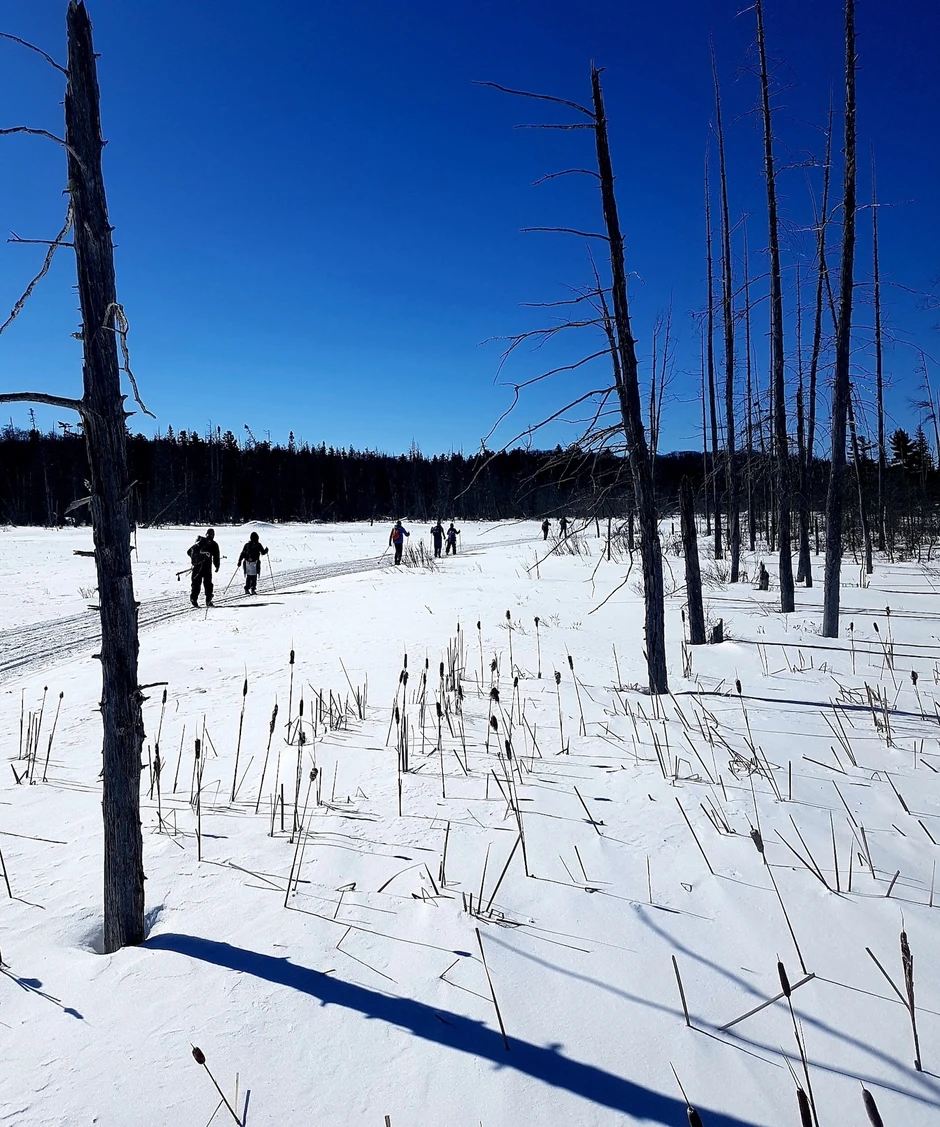
The Group of Seven in Algoma: Paintings, History, and the Agawa Canyon Tour
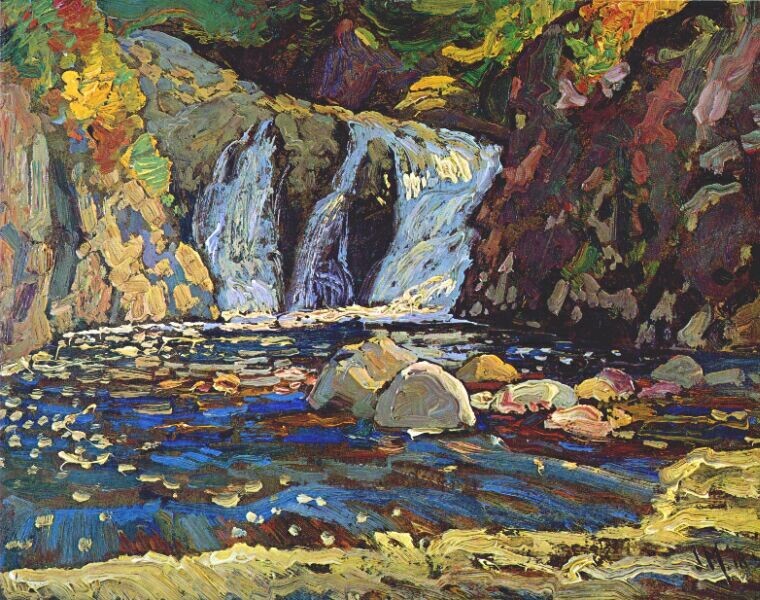
Step back in time: a steam locomotive leaves the station in Sault Ste. Marie 100 years ago. The mission: to deliver artists to a destination in Agawa Canyon Park, where a box car had been furbished to be used as living quarters. Here, a group of men would paint the area for a month; Lawren Harris, J.E.H. MacDonald, Frank Johnston, A.Y. Jackson and Arthur Lismer, the Group of Seven members who painted in the Algoma region.
The Group of Seven first painted in Algoma in May and September of 1918, at times traveling by train along the Algoma Central Rail (ACR), at others along the coast of Lake Superior. For all of them this encounter with the North, in all its natural glory, was a profound and spiritual experience that had an overwhelming impact on their development as world-class artists.
Thanks to these five men and the Algoma Region, Canadian art would be recognized by many as a patriotic emblem of our land. With the essence of Canada as a natural backdrop, and rugged beauty defined by each artist, they showed the world the treasures that were and remain prominent in the Northern landscape.
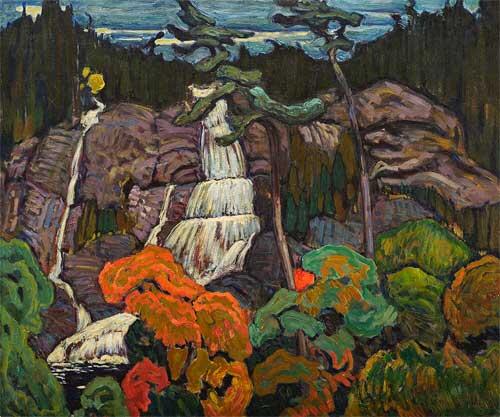
Algoma Waterfall
Today, the ACR still moves on the same track through the area more than 100 years later. As the big red engine rolls into the train station in Sault Ste. Marie, you can hear the loud whistle of the Agawa Canyon Tour Train as it click and clacks down the tracks. ACR personnel usher people, who will soon be boarding the train, back behind a yellow line as a safety precaution. Some have been planning this trip for many months, and the excitement is contagious as they look for the number on their boarding pass to match to the number on the train car assigned to them.
Having been here many times before, this is an unmistakable sight: awaiting the Agawa Canyon Tour Train to make its way down the tracks. As a commissioned local artist on the train, my mission was to assist this group of avid painters as they found their own moment in Algoma on one of the most popular train excursions in Canada. Seeking out locations once captured by the famous Group of Seven, accessible and visible only by rail.
After everyone settles into a comfortable seat by the large picture windows for their journey to the Agawa Canyon, the train starts moving in the opposite direction from which it came. Along the side of the railroad tracks, gardening enthusiasts try to identify familiar species of flowers and vegetation that are native to the area. A red fox can be seen crossing the train tracks ahead and mounting the hillside. As we head west, to the left of the train, a replica of a red boxcar can be seen, used by the Group of Seven artists as a home on wheels while painting the views around the ACR line.
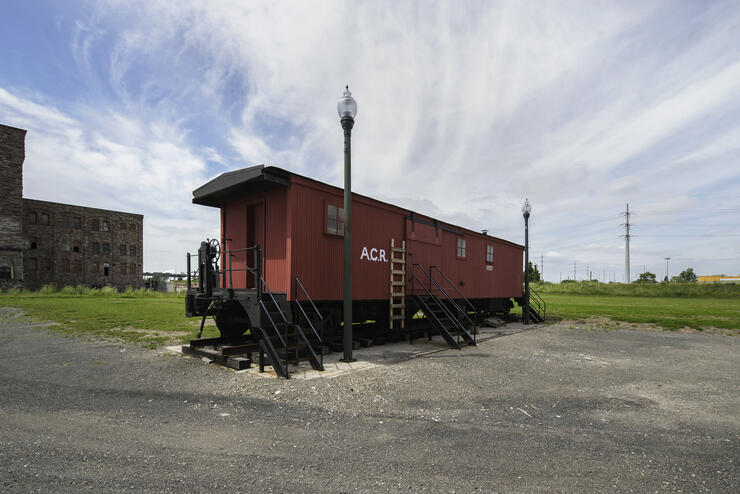
At each intersection, the train warns traffic of its approach with a blast of a mighty whistle. The passengers are continuously being informed of traditional landmarks, historical references, and scenic views by a camera attached to the front of the train, which is feeding information to mounted monitors displayed throughout each car. The trees seen from the train window are 100 feet high, old-growth forest samples. Here, the boreal forest and the St. Laurence deciduous forest meet, making the scenery of Northern Ontario far from pastoral; it is large and wild, bold and unyielding, its beauty more than can be imagined.
The first visual of a Group of Seven painting site is nearing at mile 92. From the right side of the train, Solemn Land appears as the trees part and the river opens up in front. This location is one of the most sought-after views from the tour train, and one of the most popular Algoma paintings by J.E.H. MacDonald.
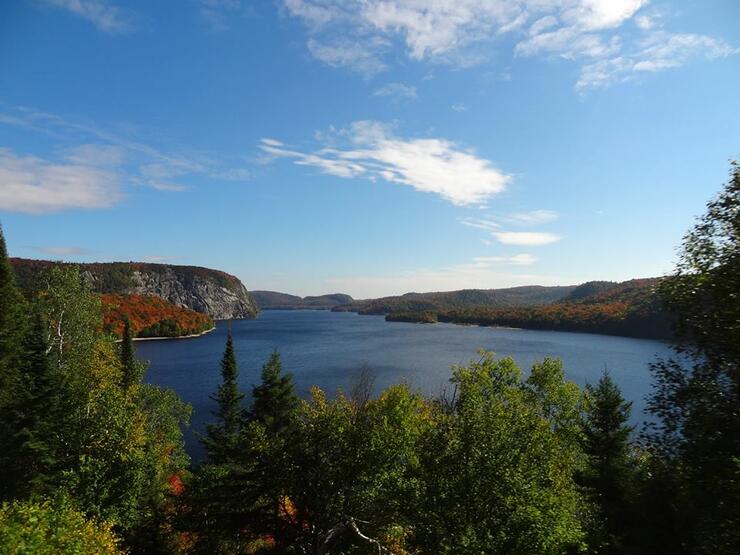
As the train descends into Agawa Canyon Park, one of the most prominent waterfalls painted by the Group of Seven presents itself. Blissfully flowing down a jagged rock face of the Canadian Shield, it is easy to see why more than one member of the group painted the famous Bridal Veil Falls. Once off the train, a peaceful walk following the Agawa River leads towards the roaring of this magnificent natural site. Watching as the water race down, struck by wonder at the sight of the falls, artists will have a chance to stop and sketch before making their way back to the train.
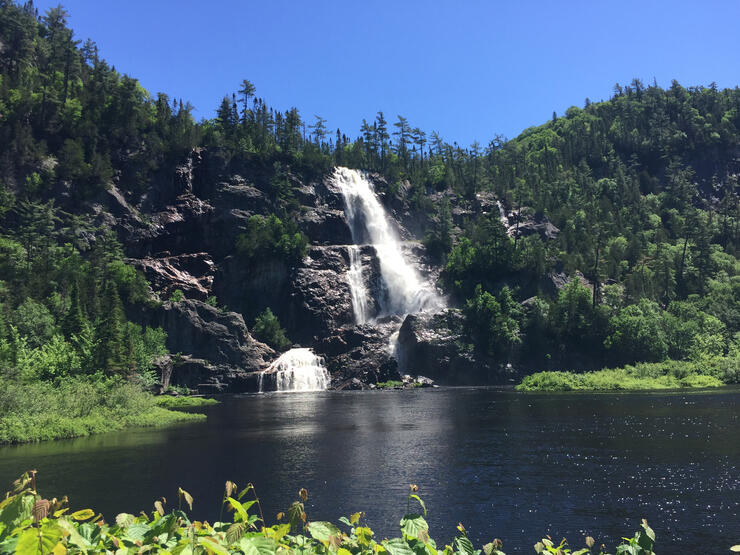
“An hour in the park is never long enough”—this common comment while boarding the train for the return trip is just another reason to visit again. The impact of being surrounded by such natural beauty unequivocally leaves its mark on the memory. As the group settles back in their seats, paint kits are handed out to each artist. During the trip back to Sault Ste. Marie, the group is busy as they paint with watercolours their very own moment in Algoma.

The impact of the Group of Seven artists in Algoma was and continues to be monumental. By encompassing Canada’s natural wilderness, its lakes and forests, depth and structure, they captured the essence of the land in their paintings. Even the solitude of trees left standing after a forest fire has its own beauty. They captured it, bringing to light the promise of regeneration and hope.
You can find their work at the Art Gallery of Algoma, where several originals are housed in their permanent collection, as well as prints available in their gift shop.
Seven men captured their moment in Algoma, now it's time to capture yours.
Recommended Articles

9 Facts to Know about the Agawa Canyon Tour Train
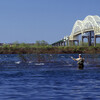
A Guide to the Best Urban Fishing in Sault Ste. Marie, Ontario

Where to Eat, Dine, and Play on the Sault Ste. Marie Waterfront

Cruising to the Next Level

Canada's Only Bushplane Museum is a Must For Your Bucket List

Why the Fall Is a Great Time to Visit Sault Ste. Marie
Canoe & Kayak Sault Ste. Marie

Peace Restaurant
